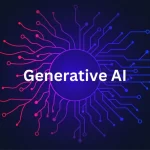
Precision Medicine Pioneers: Navigating Genomics with AI Expertise
December 5, 2023I. Introduction
A. Brief Background on Goals of Precision Medicine
In recent years, the field of medicine has undergone a transformative shift towards precision medicine, an innovative approach that takes into account individual variability in genes, environment, and lifestyle for each patient. The overarching goal of precision medicine is to tailor medical decisions and treatments to the unique characteristics of each patient, optimizing outcomes and minimizing adverse effects. This introduction provides a concise overview of the fundamental goals and principles driving the advancement of precision medicine.
B. Promise of Integrating AI in Analyzing Massive Genomics Data Sets
As we delve deeper into the era of precision medicine, the integration of artificial intelligence (AI) emerges as a powerful ally in the analysis of massive genomics datasets. This section explores the promises and potentials that AI brings to the forefront, revolutionizing the interpretation of complex genomic information and driving advancements in personalized healthcare.
II. Genomic Data Complexity and Scale
A. Discussion of Huge Genomic Data Dimensionality and Variety
The advent of high-throughput sequencing technologies has ushered in an era of unprecedented genomic data generation, characterized by immense complexity in both dimensionality and variety. This section delves into the challenges posed by the vast amounts of genomic data, highlighting the intricate dimensions and diverse forms of information obtained through advanced sequencing technologies.
- Dimensionality Challenges: a. High Volume of Genetic Information: The sheer volume of genomic data generated by modern sequencing techniques contributes to a substantial increase in data dimensionality. b. Multi-Omics Complexity: Integration of genomics with other omics data (such as transcriptomics, epigenomics, and proteomics) adds layers of complexity, requiring advanced analytical approaches.
- Variety of Genomic Information: a. Genetic Variation: Genomic data encompasses a multitude of variations, including single nucleotide polymorphisms (SNPs), insertions, deletions, and structural variants. b. Epigenetic Modifications: Information on DNA methylation patterns and histone modifications adds an additional layer of complexity to genomic datasets. c. Gene Expression Profiles: Transcriptomic data provides insights into the dynamic nature of gene expression, introducing temporal and spatial dimensions.
B. Challenges for Manual Analysis Methods
Manual analysis methods struggle to keep pace with the scale and complexity of genomic data, leading to several challenges in extracting meaningful insights from these vast datasets.
- Time-Intensive and Laborious: a. Data Volume Overwhelm: Manual analysis becomes impractical when dealing with large-scale genomic datasets, leading to delays and inefficiencies in extracting relevant information. b. Cumbersome Integration: Integrating multi-omics data manually is prone to errors and inefficiencies, hindering the comprehensive understanding of complex biological systems.
- Limited Scalability: a. Inability to Scale with Data Growth: As genomic data continues to expand exponentially, manual analysis methods face limitations in scalability, hindering their applicability to large-scale studies. b. Resource Intensiveness: Manual curation and analysis demand significant human resources, making it challenging to keep up with the increasing demand for efficient data interpretation.
- Subjectivity and Bias: a. Interpretation Variability: Manual analysis introduces the potential for interpretation variability and subjectivity, leading to inconsistent results across different analysts. b. Bias in Data Selection: Human biases may influence data selection and interpretation, potentially impacting the accuracy and objectivity of genomic analyses.
- Inefficient Pattern Recognition: a. Inability to Discern Complex Patterns: The intricate patterns within multi-dimensional genomic datasets are challenging for manual analysis methods to discern efficiently. b. Overlooking Subtle Relationships: Manual methods may overlook subtle relationships within the data, limiting the discovery of novel genomic associations.
In summary, the complexity and scale of genomic data present formidable challenges for manual analysis methods. As the field progresses, the integration of artificial intelligence emerges as a promising solution to overcome these challenges, offering scalability, efficiency, and enhanced pattern recognition capabilities for the analysis of massive and intricate genomic datasets.
III. AI Driving Discovery in Genomics
A. Examples of AI Techniques Revealing Novel Genomic Insights
Artificial intelligence (AI) has emerged as a transformative force in genomics, unveiling novel insights and patterns within complex genomic datasets. This section explores prominent examples of AI techniques driving groundbreaking discoveries in the realm of genomics.
- Genomic Variant Discovery: a. Deep Learning for Variant Calling: AI, particularly deep learning algorithms, enhances the accuracy of variant calling by recognizing patterns in sequencing data, leading to the identification of rare and pathogenic variants. b. Structural Variant Prediction: AI models excel in predicting structural variants, providing insights into large-scale genomic alterations that may underlie complex diseases.
- Disease Biomarker Identification: a. Machine Learning for Biomarker Discovery: AI techniques, including machine learning algorithms, analyze diverse genomic features to identify potential disease biomarkers, aiding in early detection and personalized treatment strategies. b. Integration with Multi-Omics Data: AI facilitates the integration of genomics with other omics data, uncovering comprehensive biomarker signatures that capture the molecular complexity of diseases.
- Drug Discovery and Target Identification: a. Predicting Drug Response: AI models analyze genomic data to predict individualized responses to drugs, contributing to the development of targeted and personalized therapeutic interventions. b. Identifying Therapeutic Targets: AI algorithms explore vast genomic datasets to identify novel therapeutic targets by uncovering gene interactions and signaling pathways associated with specific diseases.
- Functional Genomics and Pathway Analysis: a. Automated Pathway Analysis: AI-driven tools automate the identification of enriched pathways and biological processes associated with specific genomic alterations, aiding in the interpretation of functional genomics data. b. Uncovering Gene Networks: AI techniques, such as network analysis, reveal intricate gene networks and interactions, providing a systems-level understanding of genomic contributions to cellular functions.
B. Automating Variant Calling, Gene Interactions, Regulatory Effects
- Variant Calling Automation: a. Deep Learning-Based Variant Callers: AI-powered variant callers automate the process of detecting genetic variations, improving accuracy and sensitivity in identifying single nucleotide polymorphisms (SNPs) and insertions/deletions (indels). b. Real-Time Variant Detection: AI algorithms enable real-time variant calling, reducing analysis time and enhancing the efficiency of genomic workflows.
- Gene Interaction Prediction: a. Graph Neural Networks (GNNs): GNNs analyze complex gene interaction networks, predicting functional relationships and uncovering synergistic effects among genes. b. Integrative Network Models: AI-driven models integrate diverse genomic and biological data to predict gene interactions, offering a comprehensive view of the regulatory landscape.
- Regulatory Effect Inference: a. Enhancer-Promoter Prediction: AI techniques, such as convolutional neural networks (CNNs), predict enhancer-promoter interactions, elucidating regulatory effects on gene expression. b. Epigenetic Modification Analysis: AI models analyze epigenomic data to infer regulatory effects, linking chromatin modifications to gene regulation with high precision.
- Personalized Genomic Medicine: a. Patient-Specific Variant Interpretation: AI assists in interpreting individual genomic variations in the context of patient-specific data, guiding clinicians in making informed decisions for personalized medicine. b. Tailored Treatment Recommendations: AI-driven platforms analyze genomic and clinical data to suggest personalized treatment options based on the specific genomic profile of each patient.
In conclusion, AI is at the forefront of driving transformative discoveries in genomics, uncovering novel insights, automating complex analyses, and revolutionizing how we interpret and utilize genomic information for advancing personalized medicine and understanding the intricacies of genetic contributions to health and disease.
IV. AI-Enabled Diagnostic Innovation
A. AI-Powered Platforms for Genomic Test Interpretation
The integration of artificial intelligence (AI) has revolutionized the field of genomics, particularly in the interpretation of genomic tests. AI-powered platforms play a crucial role in extracting meaningful insights from complex genomic data, enhancing accuracy, and expediting the diagnostic process.
- Interpreting Genetic Variants: a. Variant Classification: AI algorithms streamline the interpretation of genetic variants, categorizing them based on their clinical significance and relevance to specific diseases. b. Pathogenicity Prediction: AI models aid in predicting the pathogenicity of genetic variants, assisting clinicians in distinguishing between benign and clinically relevant mutations.
- Clinical Decision Support Systems: a. Automated Report Generation: AI-enabled platforms automate the generation of comprehensive and clinically relevant reports for genomic tests, ensuring clarity and consistency in results. b. Integration with Electronic Health Records (EHR): AI facilitates seamless integration with EHR systems, providing a unified platform for clinicians to access genomic information in the context of a patient’s medical history.
- Rare Disease Diagnosis: a. Pattern Recognition: AI-driven platforms excel in recognizing patterns within genomic data associated with rare diseases, accelerating the identification of elusive genetic causes. b. Prioritization of Variants: AI algorithms prioritize variants based on their likelihood of causing rare diseases, aiding in targeted diagnostic investigations.
- Cancer Genomics: a. Tumor Profiling: AI analyzes cancer genomic data to profile tumors, identifying specific mutations and molecular signatures that inform prognosis and guide treatment decisions. b. Predicting Therapeutic Responses: AI models predict responses to cancer therapies based on the genomic profile of tumors, facilitating personalized and targeted treatment strategies.
B. Enabling Personalized Diagnoses and Treatment Plans
- Precision Medicine Integration: a. Genomic Profiling for Treatment Selection: AI assists in selecting optimal treatments based on the genomic profile of individual patients, contributing to the principles of precision medicine. b. Dynamic Treatment Recommendations: AI continuously evolves treatment recommendations based on real-time analysis of new genomic data, allowing for adaptive and personalized care plans.
- Risk Prediction and Prevention: a. Disease Susceptibility Assessment: AI models analyze genomic data to predict an individual’s susceptibility to certain diseases, enabling proactive interventions for risk reduction. b. Lifestyle and Treatment Recommendations: AI-driven platforms consider both genomic and lifestyle factors to provide personalized recommendations for disease prevention and management.
- Pharmacogenomics Guidance: a. Drug Response Prediction: AI interprets genomic data to predict individual responses to medications, minimizing adverse reactions and optimizing drug efficacy. b. Tailored Medication Plans: AI enables the customization of medication plans based on genomic factors, enhancing the safety and effectiveness of pharmacological interventions.
- Patient-Centric Decision Making: a. Empowering Informed Choices: AI-supported genomic interpretations empower patients to make informed decisions about their healthcare based on personalized diagnostic insights. b. Enhanced Communication: AI facilitates effective communication between healthcare providers and patients, ensuring a clear understanding of genomic test results and personalized treatment options.
In summary, AI-enabled diagnostic innovation in genomics not only expedites the interpretation of complex genomic data but also empowers clinicians to provide personalized diagnoses and treatment plans. The integration of AI in genomics heralds a new era of precision medicine, where individualized care is guided by the intricate details of each patient’s genomic makeup.
V. The Future of AI in Precision Health
A. Expectations for Increasingly Optimized AI Algorithms
The future of AI in precision health holds great promise, driven by the anticipation of continually optimized algorithms that enhance the accuracy, efficiency, and interpretability of genomic data analysis.
- Enhanced Accuracy in Variant Interpretation: a. Refinement of Classification Models: Ongoing advancements in AI algorithms will lead to increasingly accurate models for classifying genetic variants, reducing false positives and negatives. b. Integration of Multi-Omics Data: Optimized algorithms will seamlessly integrate multi-omics data, providing a more comprehensive understanding of the functional impact of genetic variations.
- Real-Time Data Analysis: a. Dynamic and Real-Time Interpretation: Future AI algorithms will operate in real-time, enabling rapid and dynamic interpretation of genomic data for immediate clinical decision-making. b. Continuous Learning Models: Algorithms will continuously learn and adapt, staying updated with the latest genomic research and clinical outcomes.
- Interpretability and Explainability: a. Transparent Decision-Making Processes: Optimized algorithms will prioritize interpretability, providing transparent insights into how decisions are reached. b. Explanatory Tools for Clinicians: AI platforms will include tools that offer detailed explanations for genomic interpretations, fostering trust and collaboration between AI and healthcare professionals.
- Personalized Treatment Recommendations: a. Fine-Tuning Therapeutic Predictions: Algorithms will undergo refinement to offer more precise and nuanced predictions of individual responses to treatments, considering a broader range of factors. b. Incorporation of Real-World Evidence: AI will increasingly incorporate real-world evidence, improving the relevance and applicability of treatment recommendations to diverse patient populations.
B. Potential to Routinely Leverage Population-Scale Genomics
- Population-Scale Genomic Databases: a. Expanding Genomic Datasets: Future AI applications will leverage ever-expanding population-scale genomic databases, enhancing the depth and diversity of reference data. b. Global Collaboration: Optimized algorithms will facilitate global collaboration, allowing researchers and clinicians to access and contribute to large-scale genomic datasets for more robust analyses.
- Public Health Surveillance and Interventions: a. Early Disease Detection: AI algorithms will routinely analyze population-scale genomic data to detect early signs of genetic predispositions and potential disease outbreaks. b. Tailored Public Health Interventions: Insights from AI-driven analyses will inform tailored public health interventions, optimizing preventive measures based on population-specific genomic patterns.
- Ethical and Privacy Safeguards: a. Advancements in Privacy-Preserving Techniques: Future AI systems will implement state-of-the-art privacy-preserving techniques to safeguard individual genomic data, addressing ethical concerns. b. Transparent Data Governance: Robust governance frameworks will be established to ensure transparent and ethical use of population-scale genomics data, fostering trust among individuals and communities.
- Continuous Learning and Iteration: a. Iterative Improvement Processes: AI algorithms will engage in continuous learning and iteration, adapting to evolving genomic knowledge and healthcare practices. b. Feedback Loops with Clinicians: Seamless feedback loops between AI systems and healthcare professionals will contribute to ongoing improvements in precision health applications.
In conclusion, the future of AI in precision health holds exciting prospects, with expectations for increasingly optimized algorithms that bring greater accuracy, transparency, and personalization to genomic data interpretation. The routine leverage of population-scale genomics, combined with ethical considerations, is poised to revolutionize public health initiatives and propel the field toward more effective and equitable precision healthcare solutions.
VI. Conclusion
A. Summary of Pivotal Role for AI Capabilities in Genomics and Medicine
In conclusion, the integration of artificial intelligence (AI) capabilities has ushered in a transformative era for genomics and medicine, playing a pivotal role in shaping the landscape of precision healthcare. The symbiotic relationship between AI and genomics has resulted in significant advancements, and their collaborative impact is poised to revolutionize medical practices and patient outcomes.
- Precision and Efficiency in Genomic Analysis: a. Accurate Variant Interpretation: AI algorithms excel in accurately interpreting complex genomic variants, providing clinicians with precise insights into genetic variations. b. Real-Time Analysis: The integration of AI enables real-time analysis of genomic data, expediting the diagnostic process and facilitating prompt clinical decision-making.
- Personalized Medicine Advancements: a. Tailored Treatment Recommendations: AI-driven platforms contribute to the advancement of personalized medicine by offering tailored treatment recommendations based on individual genomic profiles. b. Improved Patient Outcomes: The integration of AI in genomic medicine enhances the potential for improved patient outcomes through targeted and optimized therapeutic interventions.
- Population-Scale Insights and Public Health Impact: a. Insights from Large Datasets: AI leverages population-scale genomic datasets to extract meaningful insights, contributing to our understanding of genetic predispositions and informing public health strategies. b. Disease Surveillance and Prevention: The routine use of AI in population-scale genomics supports early disease detection, surveillance, and the development of targeted preventive interventions.
- Continuous Learning and Optimization: a. Dynamic Adaptation to Knowledge Evolution: AI systems continuously adapt to the evolving landscape of genomics, incorporating new research findings and refining their analytical capabilities. b. Feedback Loops with Healthcare Professionals: Collaborative feedback loops between AI systems and healthcare professionals contribute to ongoing improvements, ensuring the relevance and reliability of genomic analyses.
- Ethical Considerations and Privacy Safeguards: a. Transparent and Ethical Use: AI applications in genomics prioritize transparency and ethical considerations, implementing safeguards to protect individual privacy and maintain trust. b. Balancing Technological Advancements with Ethical Guidelines: The evolving role of AI in genomics underscores the importance of aligning technological advancements with ethical guidelines, ensuring responsible and equitable use.
In essence, AI’s capabilities in genomics and medicine have redefined our approach to understanding and leveraging genetic information. The synergy between advanced computational methods and genomic insights has paved the way for a future where healthcare is increasingly personalized, precise, and accessible. As we navigate this exciting frontier, the continued collaboration between AI and medical professionals will be instrumental in unlocking the full potential of genomics for the benefit of individuals and populations alike
















